The Fundamentals of Barbecue Salmon
I acquired a barbecue the other day. Which is really just code word for someone left a perfectly functional grill on the side of the road and I am from Portland, where picking up orphaned furniture is practically a past time. So now, of course, making barbecue salmon is my top priority.
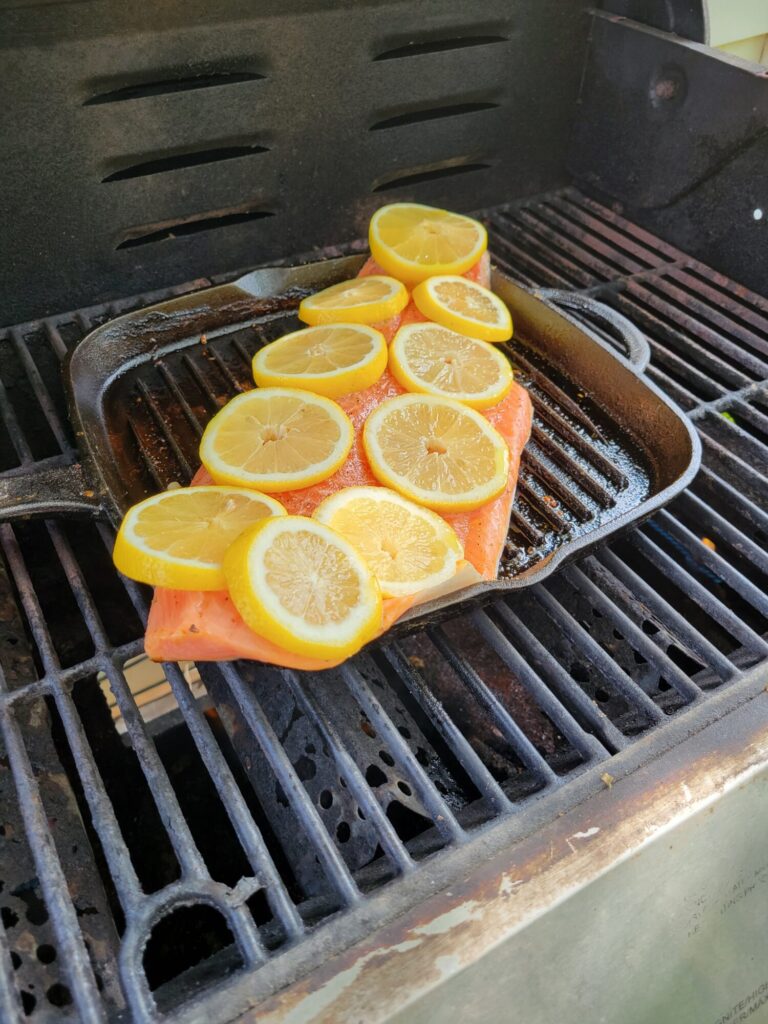
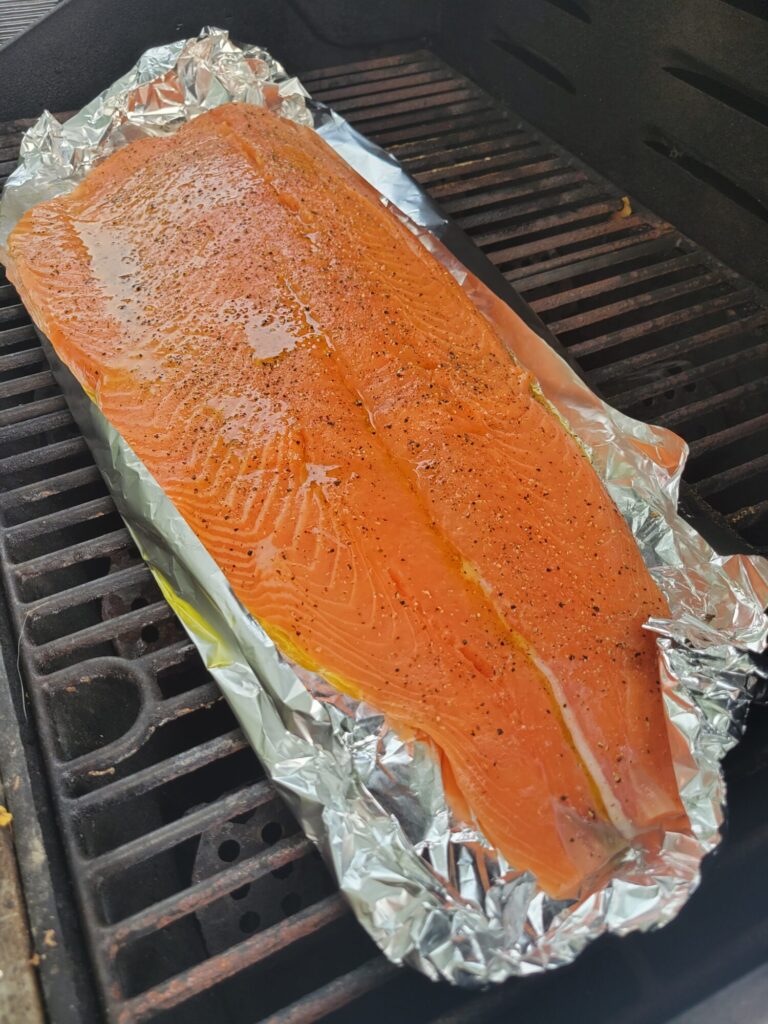
Why Barbecue Salmon?
I'm partial to grilling salmon. This might be because I grew up making salmon this way. Wrapping salmon in aluminum foil and firing up the barbecue was just what we did when I was a kid!
But there are actually some reasons to grill salmon. It cooks faster and retains more of a smokey, grilled flavor. Salmon is also quite a large, oily fish. This means that it holds up well in the grill. A smaller, more delicate fish may dry out and break apart.
Since the fish does cook more quickly than in the oven and the grill can have hot spots, this does make it slightly more difficult to cook evenly. Which can be easier to control in the oven. But it also is just fun to break out the grill and salmon is an incredibly forgiving fish that's easy to master.
If you're not quite up to barbecuing, baking salmon in the oven is always an option. I have an entire article on the more detailed process in The Fundamentals of Oven Baked Salmon.
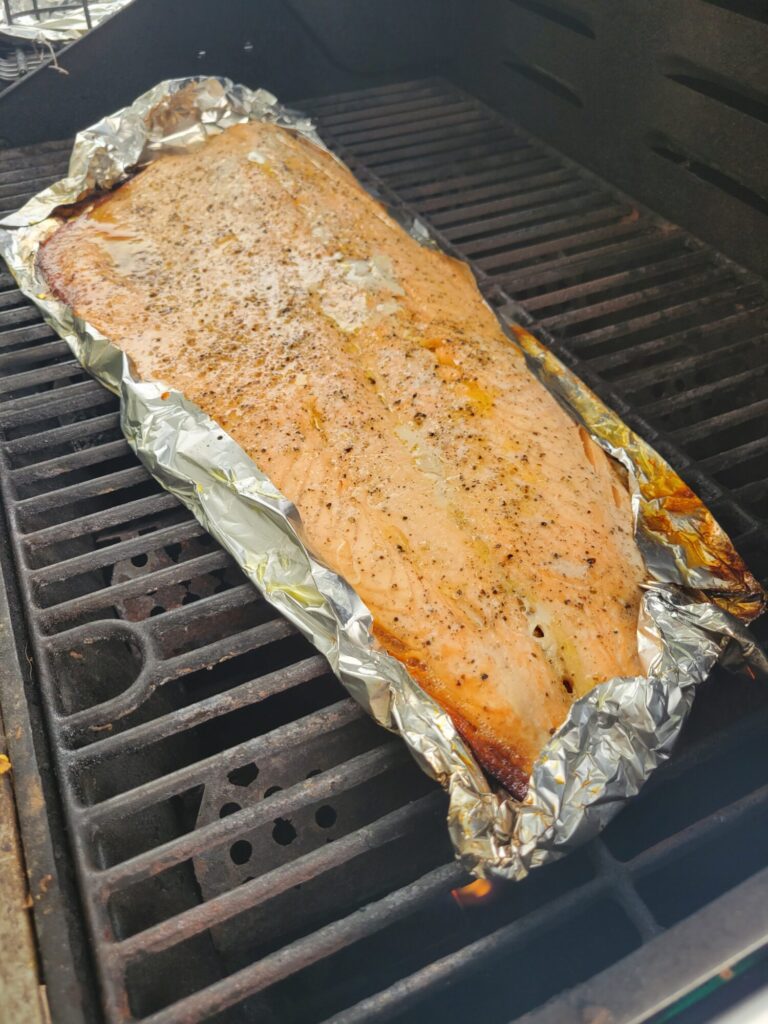
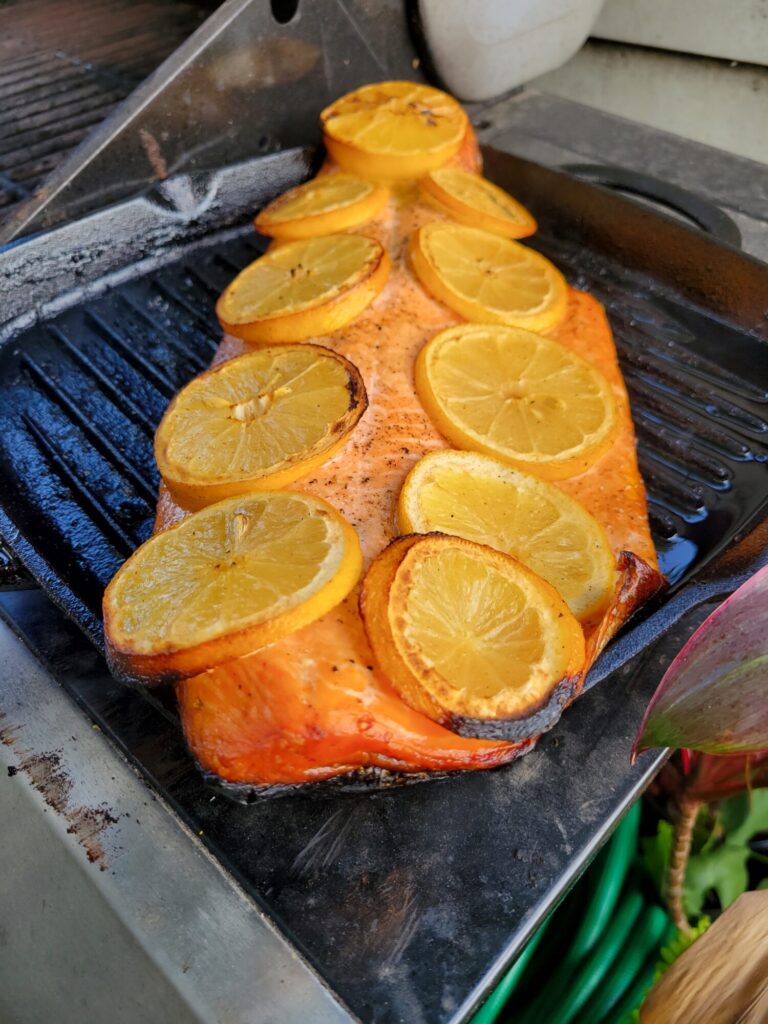
What is the Cooking Time?
There is no set, exact time for cooking salmon. Every fillet is going to be a different shape and size. Even two fillets that weigh the same amount may cook in different amounts of time because of varying thickness levels.
Because of this, salmon cooking times tend to be based on how thick the cut is. However, I've never gone to cook fish and then thought to myself, "Time to break out the ruler and calculate exactly how long this fish needs to bake!"
You could of course do this. I'm sure that some people do do this. Salmon should be cooked to an internal temperature of 145 degrees Fahrenheit, so if you know your oven temperature and the rate at which salmon of your particular scale cooks at? Yes, there is a mathematical formula.
But it's a lot easier to simply break out a meat thermometer or to cook based on sight. Salmon starts out at a deep pink hue. As it cooks, it lightens and the white protein lines begin to expand. The white lines are often thought of as fat, but they're really albumin proteins that give salmon stripes when cooked.
Salmon also flakes incredibly well. If you spear it with a fork, the pieces easily fall apart at these protein lines. Undercooked fish will still retain their shape under pressure and have a deeper pink hue.
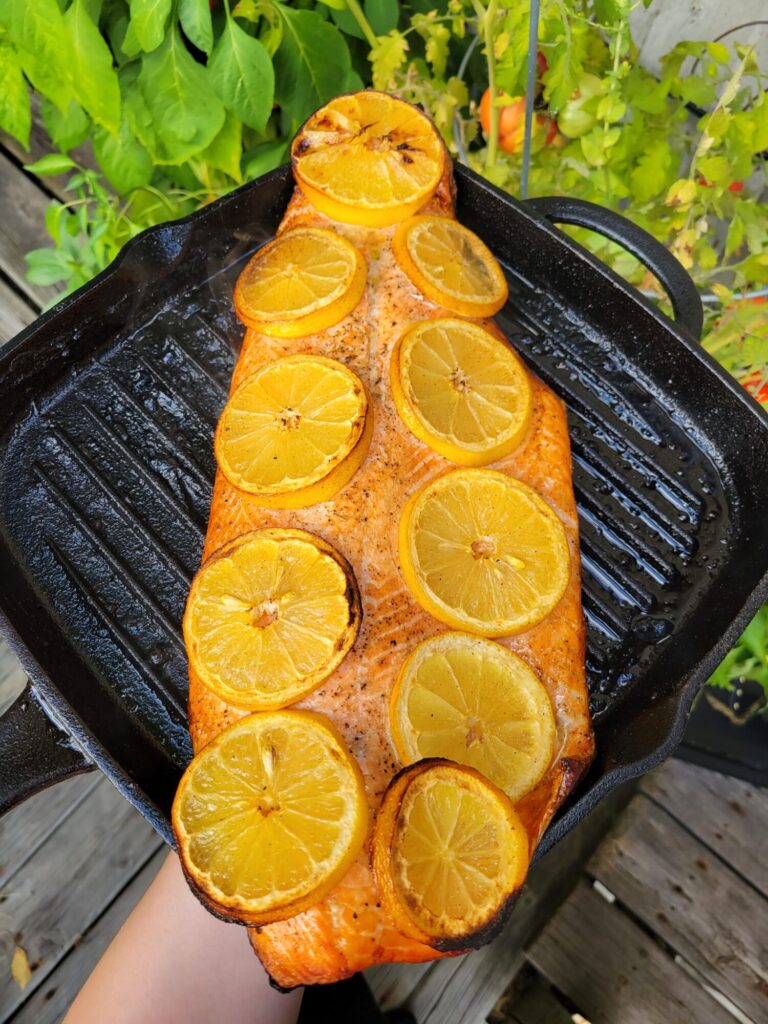

Do You Need Aluminum Foil?
You don't necessarily need aluminum foil! But you do need something. As much as salmon is a relatively easy fish to cook because it holds up so well while cooking? It will still burn and dry out under intense heat. Since salmon is cooked at a pretty high temperature, this is a concern. Especially if the fillet is on the larger side and/or has varying degrees of thickness. Which most do because the tail is much thinner than the rest of the fish!
The easiest way to combat this is to wrap it in foil to create a little Dutch-oven like environment where the heat is retained at more of a consistent temperature inside of the foil. Or you can coat the salmon in a bit of olive oil and lemons.
I prefer the lemon method because I like the citrus flavor permeating into the fish more than the foil. I don't always buy lemons at the places that I buy fish, though! Or I mistakenly think that I already have lemons at home. So, sometimes I get caught without citrus. You can substitute any other type of similar fruit, like limes or oranges.
However foil is also a perfectly acceptable way to cook salmon. Especially if you don't want to add a citrus flavor to the fish. I do this quite often when making something like a soup or chowder that doesn't call for anything quite that acidic. It also retains more of the flavors inside of the fish. So, if you're adding any herbs or fresh fruits or vegetables, wrapping it in foil will help the flavors permeate.
Gallery

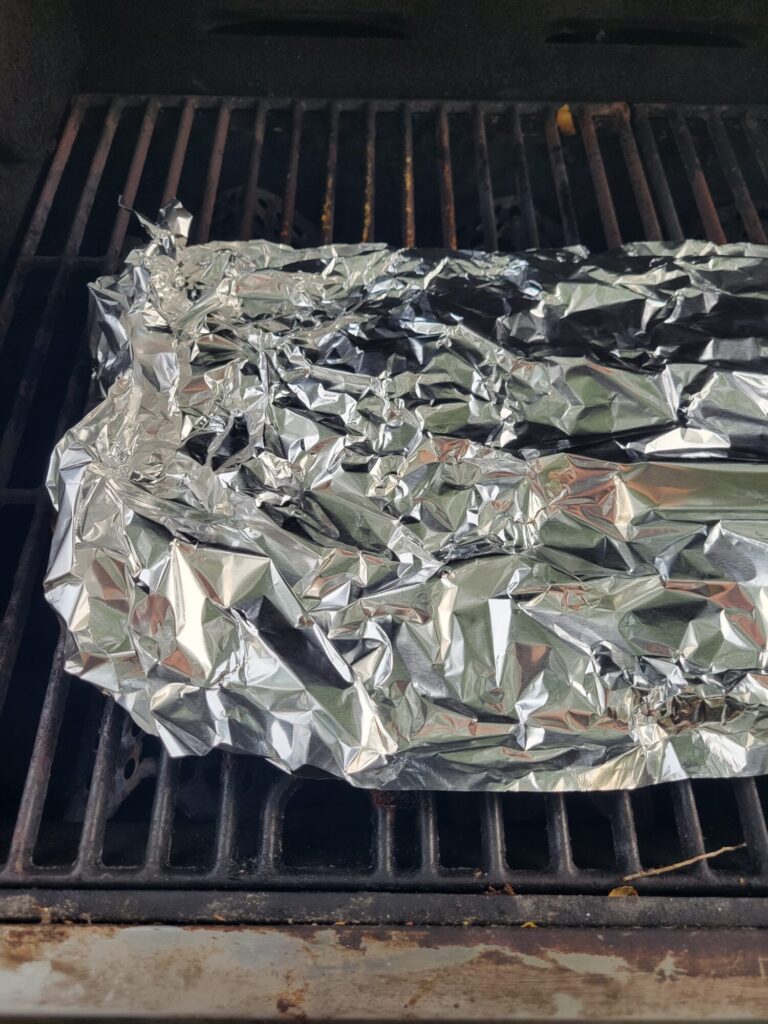

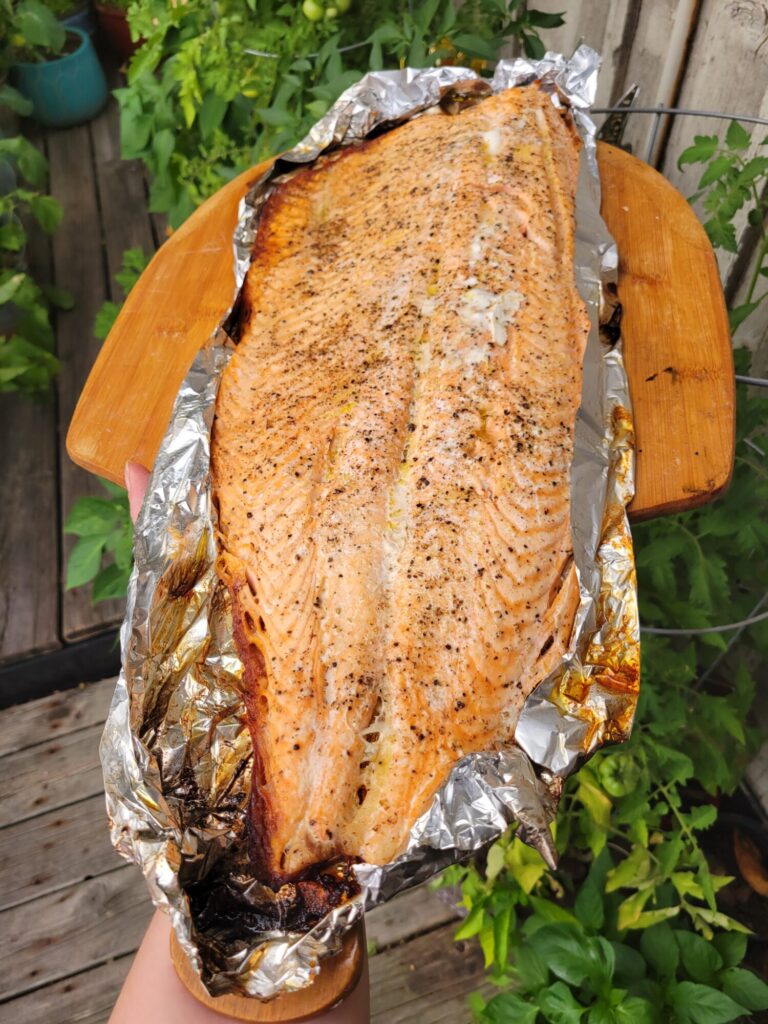
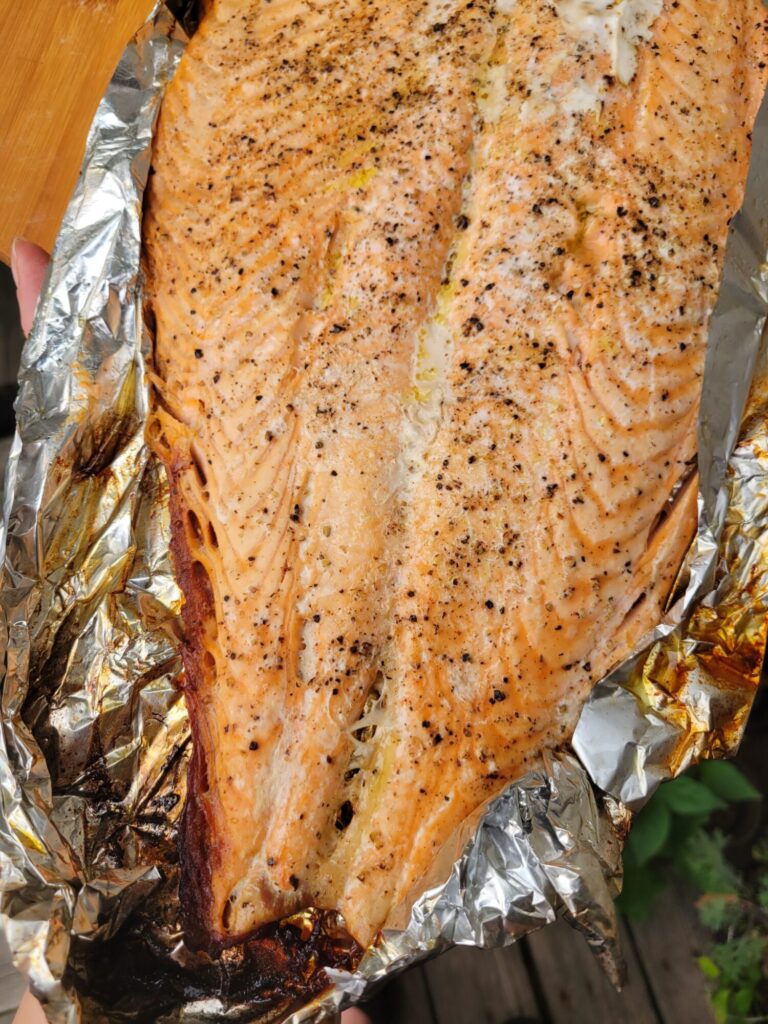
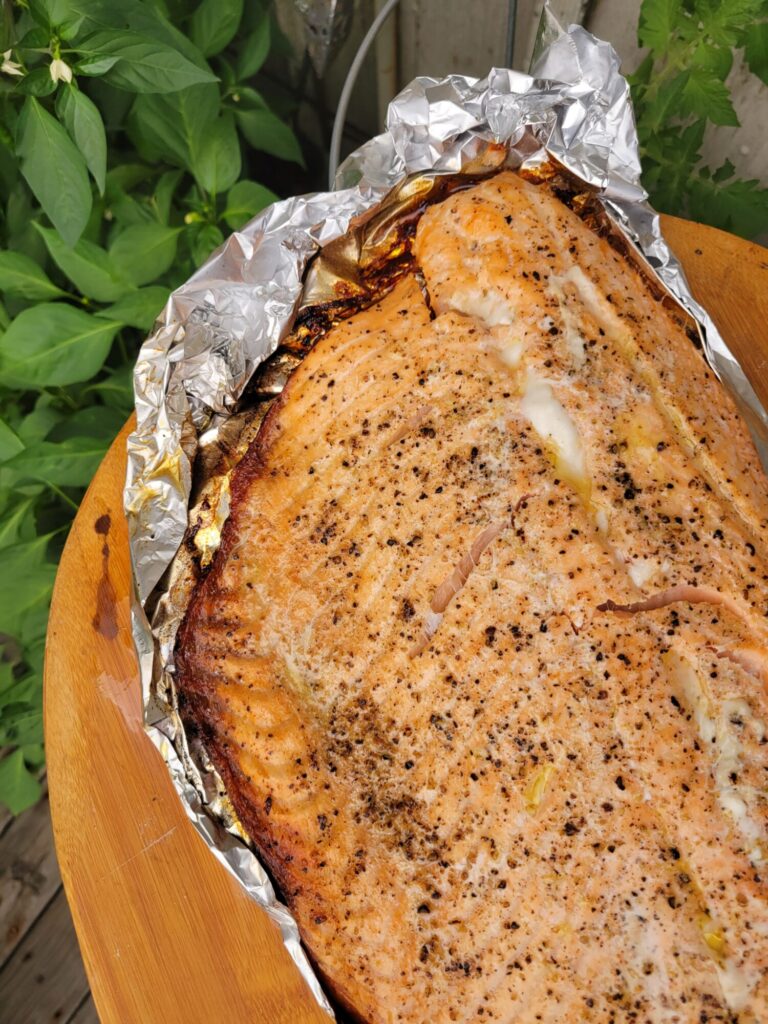


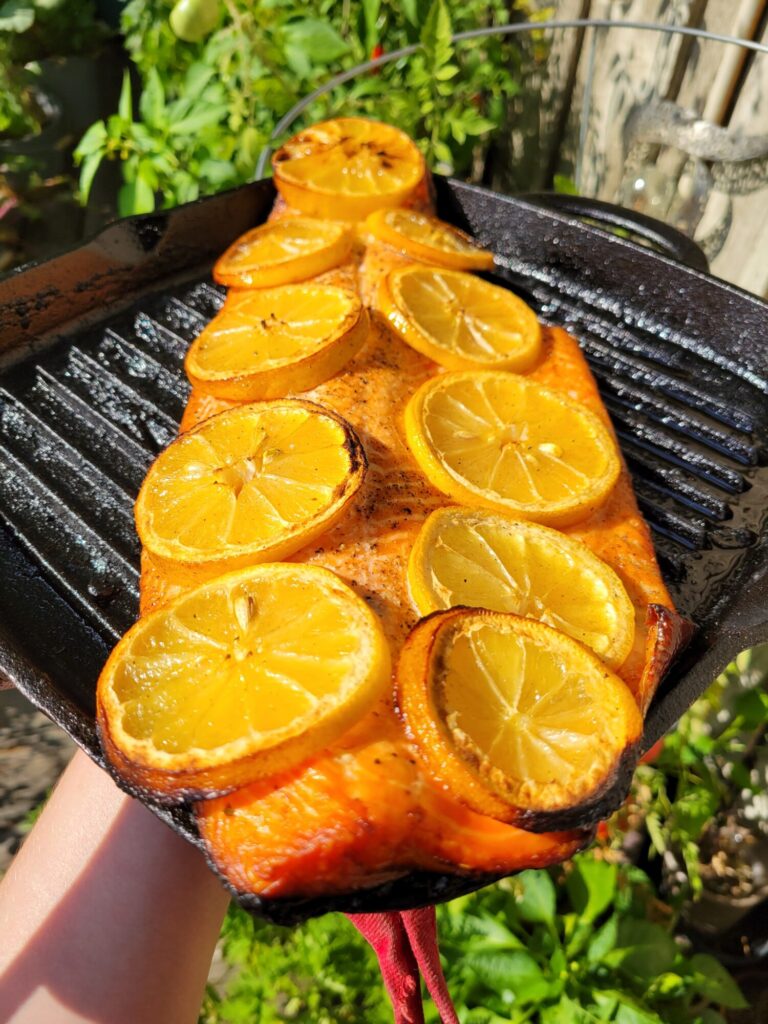
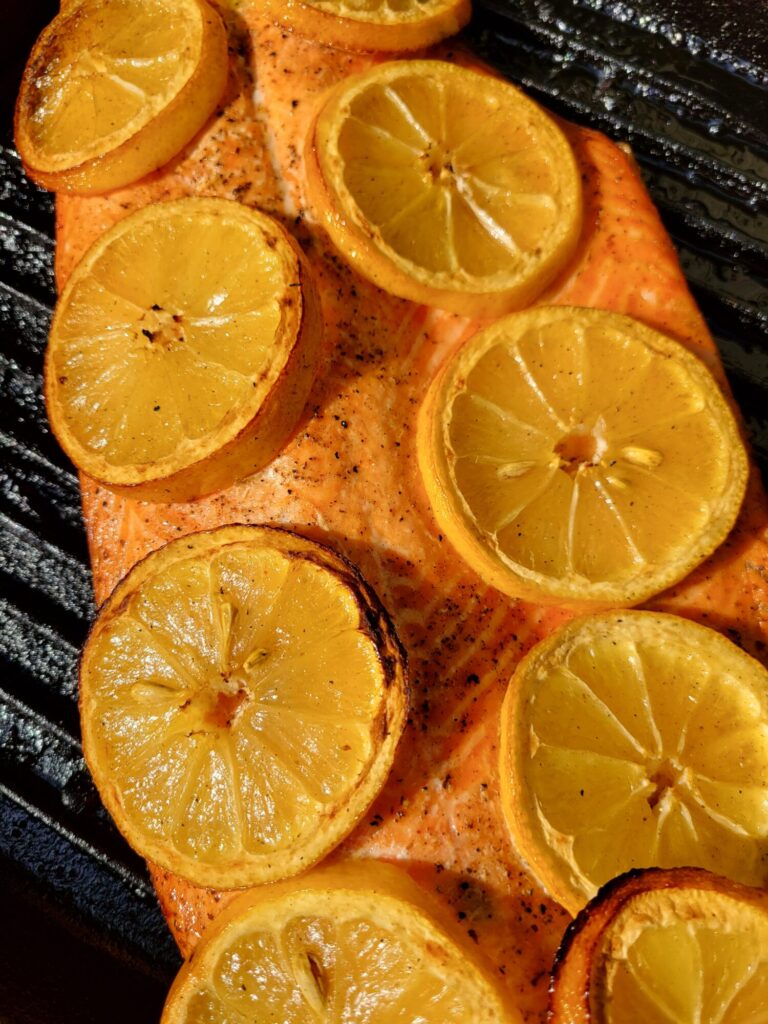
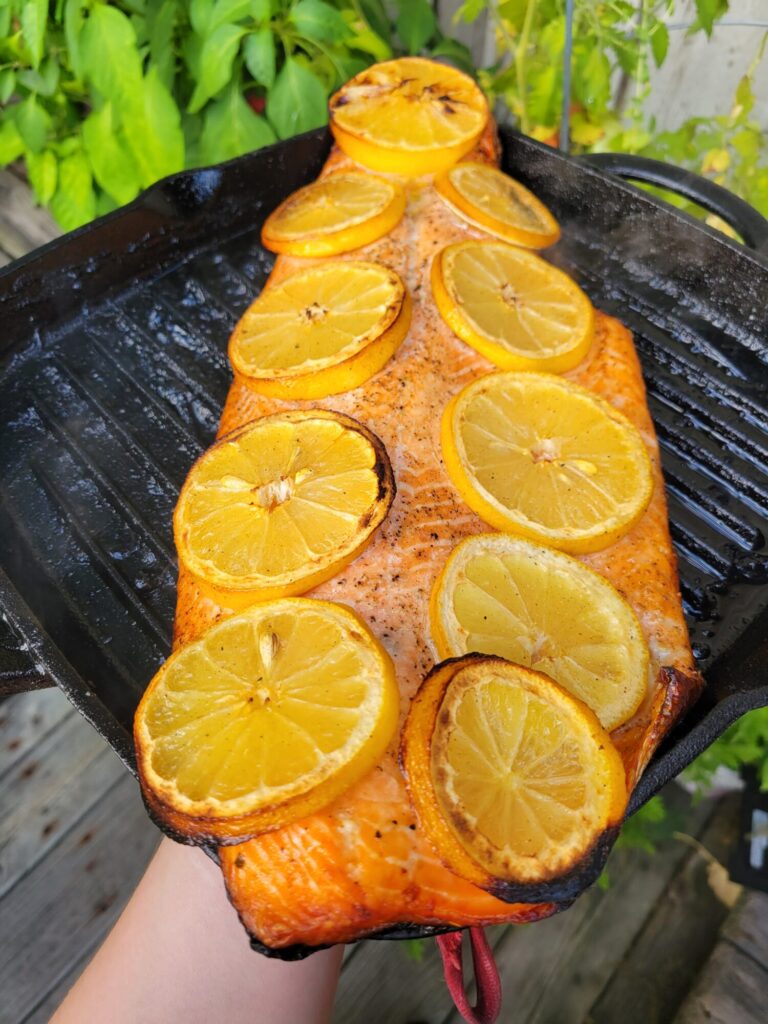
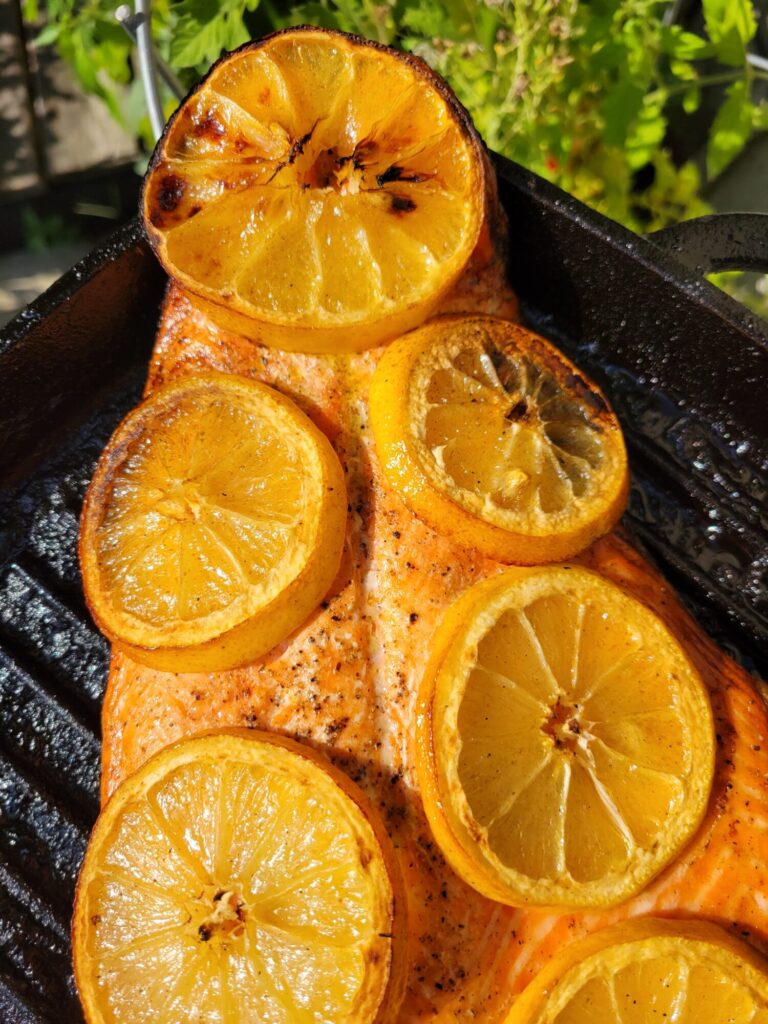
What to Make w/ Barbecue Salmon
Ever since bringing home the barbecue I have pretty much constantly been grilling salmon. It's an incredibly versatile fish that you can goes great in everything from pasta to burgers and burritos.
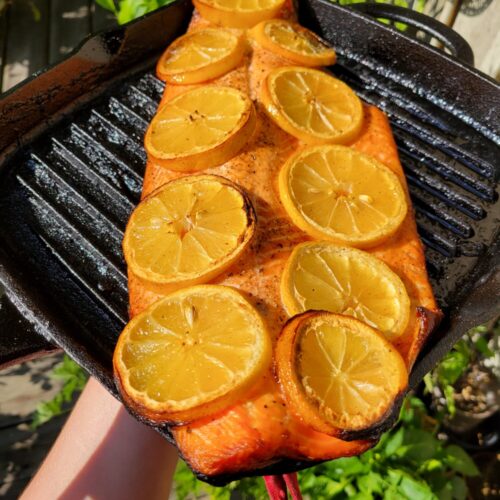
The Fundamentals of Barbecue Salmon
Equipment
- Barbecue
- Cast Iron Skillet or Aluminum Foil
Ingredients
- 1 fillet salmon
- splash olive oil
- dash salt
- dash pepper
- lemon slices (optional)
Instructions
- Let the salmon rest until it reaches room temperature.I usually let it sit while the skillet preheats. However, for particularly large fillet's, you may need to remove the tilapia from the fridge a little while before you preheat the skillet. Exactly how long varies widely based on room temperature. Although 15-30 minutes is usually sufficient.
- Preheat barbecue to medium heat.I grilled a very salmon, so I turned all 4 burners to medium. For smaller fillets, either cut the temperature or cooking time slightly. Although the same basic principles will apply, regardless of size.
- Meanwhile, lay the salmon across a sheet of aluminum foil.You can cook the salmon directly on the grill if it still has the skin attached. The aluminum foil will help contain the mess, though, as the fat and oils will drip into the grill. Alternatively, you can use a baking sheet.I also covered the top with foil in order to get a more even cook on such a large fillet of salmon. For smaller portions that will cook in less time, this isn't as necessary. Although it can help prevent the ends and smaller portions of the fish from burning while the center is still cooking.
- Lightly drizzle with olive oil and sprinkle with salt and pepper.
- Alternatively to aluminum foil, you can top the salmon with sliced lemons. Adding an extra layer helps prevent the salmon from burning and means that you don't necessarily have to cover the top of the fillet in aluminum foil if you don't want to.Although you can certainly do both and the salmon will retain more of a lemon flavor if you do.
- Bake for about 8-10 minutes for smaller salmon fillets and about 15-20 minutes for larger ones. The salmon should flake easily with a fork.The general rule of thumb is to bake for 4-6 minutes per half inch of salmon. Although I've never gotten out a ruler and measured the thickness of fish! Nor do I find this the most helpful way to cook seafood. No two fillets, even of the same size, are going to cook in exactly the same amount of time. It's better to look for the color changing to a lighter pink hue and it flakes with a fork.
- Let rest for 5-10 minutes. Serve warm or let cool completely and serve at room temperature. Salmon is equally delicious out of the oven or later on.
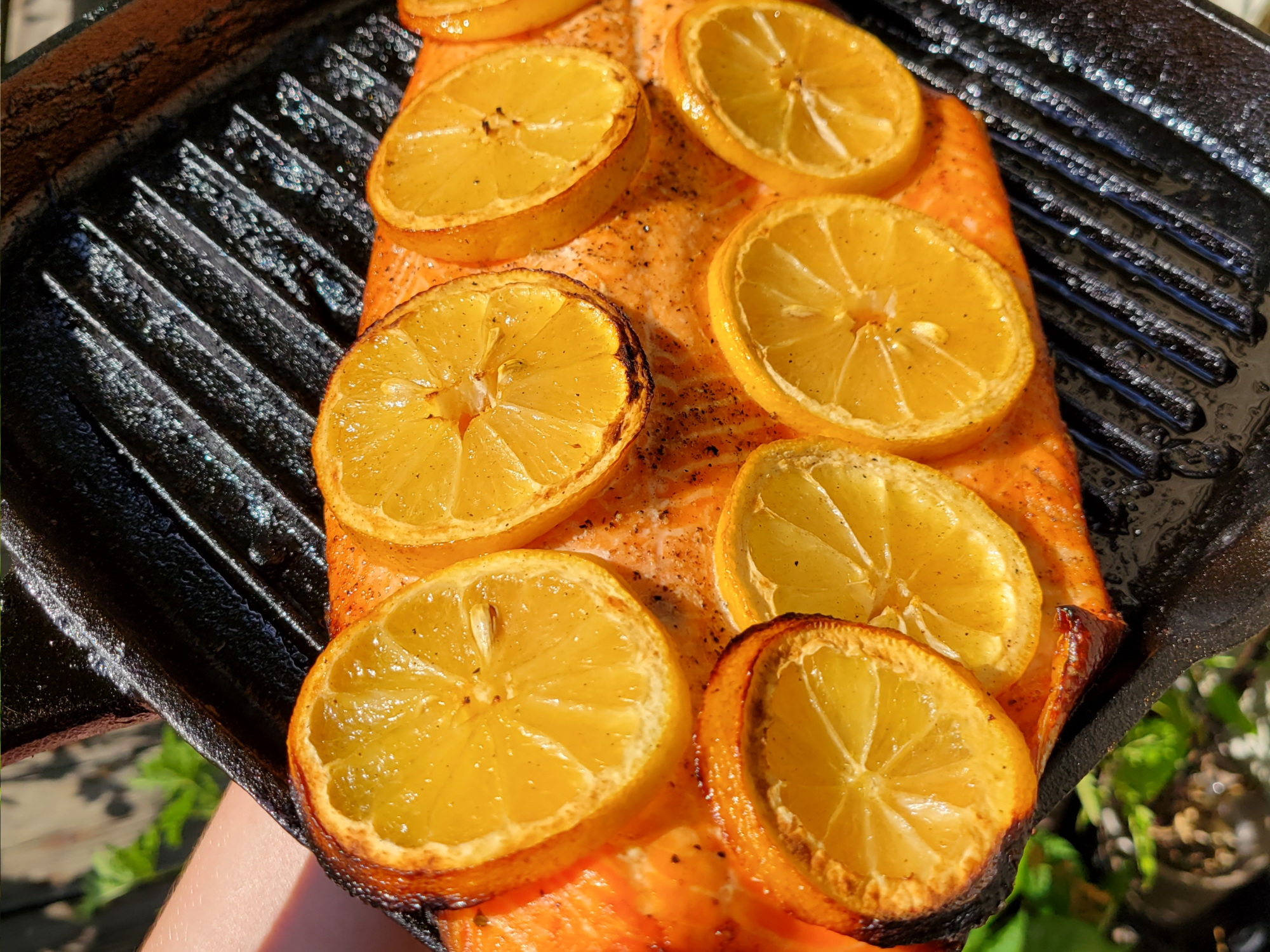
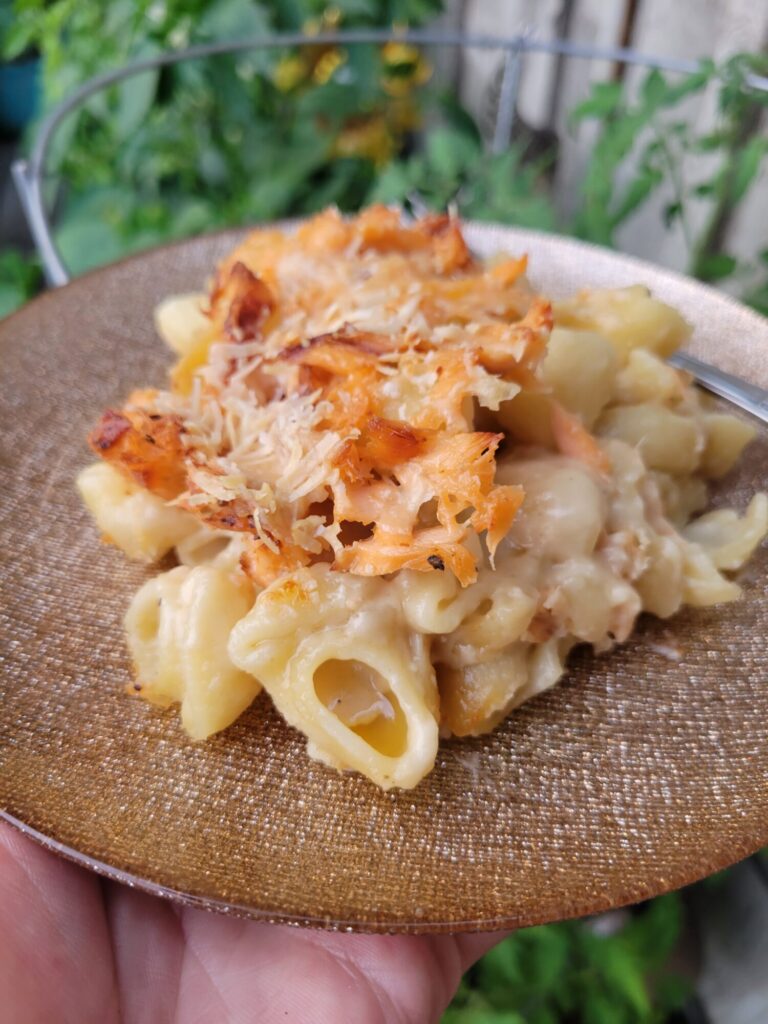
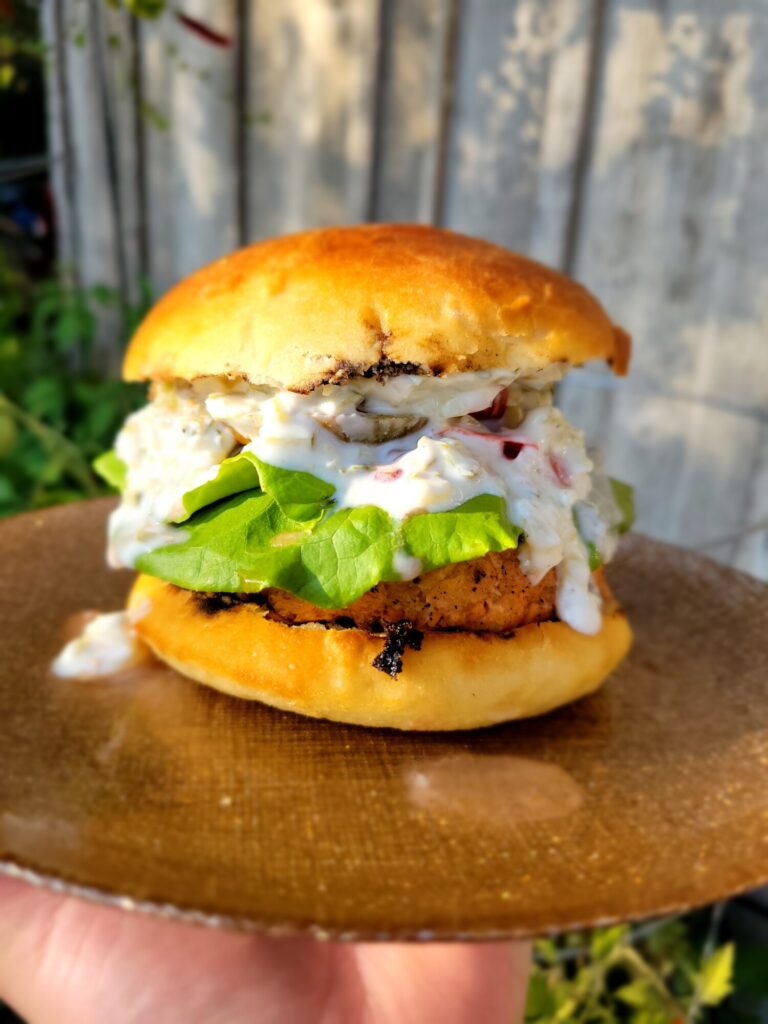
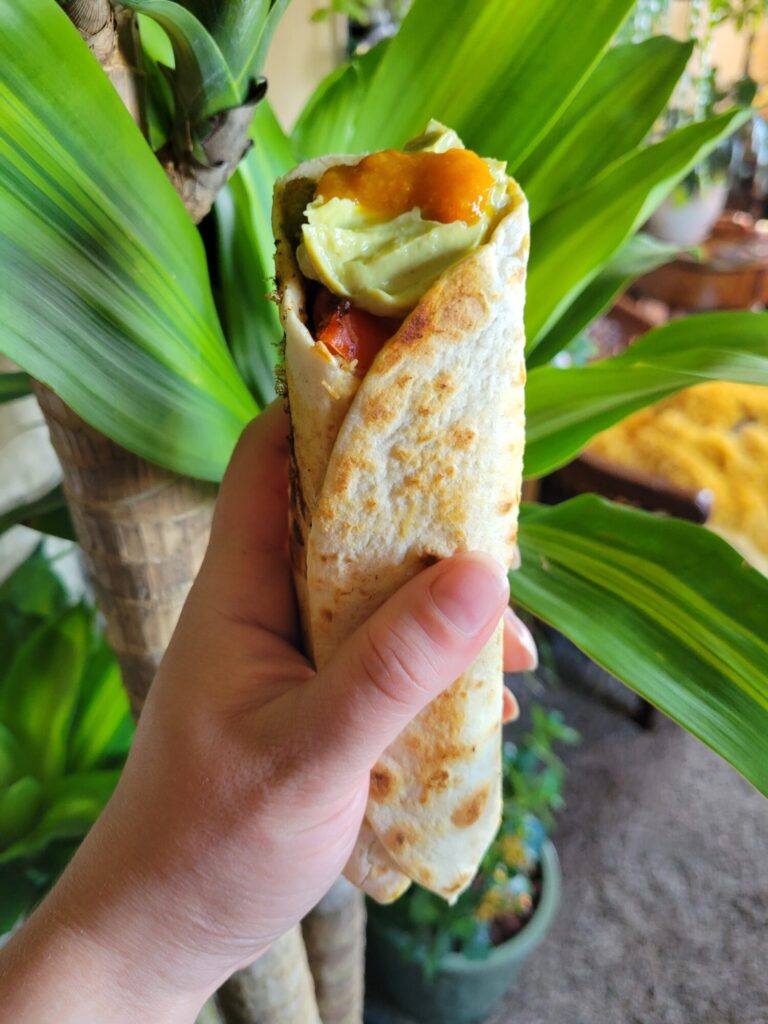

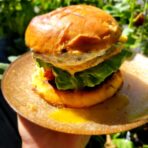
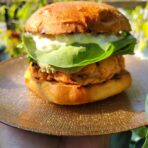
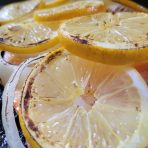
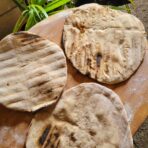

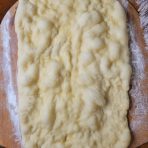
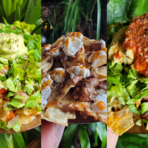
Leave a Reply